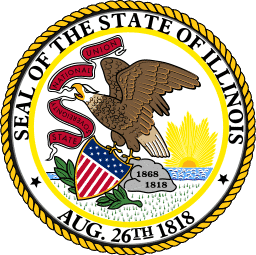…
There are 14 physical therapy assistant schools in Illinois with the accreditation necessary for state licensure. They are found in the Chicago region, as well as in small-town and rural areas throughout the state.
The institutions range from small colleges to large universities. There is one privately owned school; the rest are public. Some admission requirements and courses differ.
The Land of Lincoln is an excellent location for PTAs, the majority of whom have higher incomes than their peers in most other states. The federal Bureau of Labor Statistics (BLS) foresees 730 annual Illinois job openings through 2026.
You Might Also Like:

This board is part of the state Department of Financial and Professional Regulation (DFPR). It stipulates education, testing, and licensing requirements for PTAs. A list of licensed practitioners is posted online.
These officials launch investigations into complaints about PTAs violating ethics, regulations, or laws. Practitioners found to be guilty may lose their licenses or face fines.
The DFPR secretary appoints seven board members — six licensed physical therapists who are practicing in the state, and one person who is a representative of the public. The officials provide “expert knowledge and advice on disciplinary matters and professional performance and conduct.”
The journey to become a physical therapy assistant in Illinois starts by either finishing high school or earning a general education diploma. Some PTA schools prefer applicants who have taken college-level science and health classes in high school.
It is crucial to receive postsecondary education at a school that the Commission on Accreditation in Physical Therapy Education (CAPTE) has approved. Illinois officials do not grant licenses to graduates of non-CAPTE institutions.
Every two years, a practitioner must show evidence of having obtained 20 hours of continuing education.
Before they can go to work, prospective PTAs need to pass the Illinois Physical Therapy Assistant Examination (IPTAE). Applications to take the test must be sent to Continental Testing Services (CTS), as well as the Federation of State Boards of Physical Therapy. FSBPT charges a fee of about $400.
Applicants who receive an “authorization to test” email from CTS schedule the exam at testing centers of their choice. The 200-question IPTAE assesses students’ knowledge of safety and protection, professional responsibilities, interventions, therapeutic methods, devices and equipment, and data collection.
State regulations allow PTAs to start practicing, under the supervision of physical therapists, after they have received approval letters but before taking the exam.
License renewals are mandated every second year.
We selected the schools below based on the programs that they offer, accreditation, student population, graduation rate and reputation.
View our Ranking Methodology to learn more about how we rank schools.

76%
443
A private institution dating to 1932, Fox awards degrees to PTA students on the Tinley Park campus in suburban Chicago.
The school boasts small class sizes that allow for “personal, one-on-one attention,” as well as a physical therapy clinic with “the same types of equipment you’ll find on the job.” In addition to the typical courses, students take Interventions for Special Populations, Special Topics in PT Practice, and PTA Professional Issues. Two clinical practicums round out the curriculum.
Students receive degrees in 18 months. Their licensing exam pass rates have been near 100 percent in recent years.
18%
4351
This public community college in Cicero offers a 72-credit-hour PTA program. The curriculum is composed of four semesters over two years.
Courses include Rhetoric I and II, Introduction to Psychology, Principles of Public Speaking, Life Span: Survey of Human Development, Special Populations: Pediatric and Geriatric, Child Growth and Development, and Professional Issues in Physical Therapy. There are three clinical affiliations at inpatient and outpatient facilities.
Students also must take general education classes in communications, behavioral or social science, science and math, humanities, and health and technology. An admission requirement is having been an observer for 30 hours in two clinics.
34%
2822
Located on the south side of the city of the same name, KCC provides a two-year program with 71 credit hours in four semesters.
Students attend the typical courses and labs in “state-of-the-art” facilities, according to the school. They perform three clinical practicums. General education classes cover English, biology, psychology, and speech subjects.
One of the requirements for admission is showing proof of 20 hours’ observation experience in two kinds of physical therapy settings. An alternative is 200 hours of clinical work experience. In most years, all the program’s graduates pass the licensing exam.
32%
3164
Another community college, this school just west of Centralia serves students from nine counties in the area. It offers a four-semester PTA program consisting of 74 credit hours.
Along with the standard coursework, required classes include English Composition, Core Values and Ethical Decision Making, Applied Physics for PTA, Psychology, Fundamentals of Speech, and Sociology. There is one part-time clinical experience and two full-time assignments in physical therapy facilities. Each rotation lasts six to seven weeks.
A program admission policy calls for at least 18 hours of observation in three settings. The school has “multiple clinical affiliations.”
31%
4333
This public community college in Moline, in operation for more than 70 years, serves nine northwestern Illinois counties.
The PTA curriculum involves 72 credit hours. Students take classes for four semesters, then complete internships. Enrollment is limited to 24 class members each year. Since 1994, all the program’s graduates have found employment in the field within six months of passing the licensing exam.
The school assists with interview preparation, job searches, and career planning. Continuing education classes help practitioners satisfy their license renewal requirements.
32%
5063
This public institution reports that all its PTA graduates, on the campus in Normal, pass the licensing exam and find jobs.
The first step is to take 23 credit hours of general education concerning reading and writing, psychology, and standard PTA subjects. Grades in these classes account for about two-thirds of the points needed to win admission to the 43-credit-hour technical program. The school accepts only 16 students each year.
Program participants may receive extra help from tutors and “success coaches.” They get training in resume development and interview preparation, and learn of employment opportunities.
20%
8454
PTA students at this Des Plaines-based school attend classes on the main campus, which is within a forest preserve.
The PTA program totals 69 semester credit hours. Among the courses are Communication and Interpersonal Skills, Professional Reading Skills, Neurology, Workplace Issues, and Career Strategies. There are four clinical practicums. Students take general education classes in basic subjects, as well as global studies and U.S. diversity studies.
Admission standards include 20 hours of observing in a clinic, a 2.75 GPA, a certain ACT or SAT score, and high school biology and physics classes.
24%
7104
This network of public schools includes Malcolm X College on North Wabash Avenue, where PTA students enroll in a 68-credit-hour program.
Required general education classes include Introduction to Anatomy and Physiology, Composition 3, General Education Math, Mechanics and Power, and General Psychology.
Among the core courses are Exercise Science and Sports Studies, Personal Trainer Preparation, Allied Health Clinical Skills, Health Promotion & Wellness, Orthopedic Practice & Exercise, Cardiopulmonary & Vascular Practice, Neuromuscular Rehabilitation, and Physical Therapy Across the Lifespan.
44%
4583
A small public institution in Mattoon, LLC has a PTA program that has been accredited since 1994.
During five semesters, students take the usual courses plus Composition I, Physics, and Introduction to Psychology. The curriculum provides extensive clinical experience, with five assignments in various healthcare facilities. Twenty-four students are accepted each fall.
Those wishing to enroll must have one year of high school biology. Reading, math, and English classes are recommended. There is free tutoring for every class. The rates for graduates passing the licensure exam and securing employment are at or near 100 percent each year.
31%
8841
This community college offers a two-year, 71-credit-hour program on its Belleville campus. There are five semesters, including one summer term.
Students are advised to begin by taking general education courses, some of which are available online. Technical classes cover the main topics, as well as rhetoric and composition, psychology, public speaking, life-span development, and sociology. Practical experience comes from three multi-week experiences at hospitals and clinics in the St. Louis area.
Graduates may pursue a bachelor of science degree in healthcare management, or a master of health administration, at Maryville University.
34%
9567
This public school is midway between Chicago and Rockford. Its five-semester PTA program entail 71-74 credit hours, including three clinical rotations totaling 624 clock hours.
There are four Physical Therapy Assisting courses. The most advanced class teaches interventions for patients needing amputation & prosthetic training, neurological deficits due to disease or trauma, common pediatric disorders, and cardiac and pulmonary conditions.
The curriculum concludes with a seminar in which students learn about current issues in PTA, career options, professional organizations, government regulations, and license exam preparation.
39%
8875
A public school in East Peoria, ICC provides a four-semester program that starts in the fall. It consists of 70-71 credit hours.
Along with the typical classes, students take Special Patient Populations, and Child and Adolescent Development. The rest of the curriculum involves 27-28 credit hours of general education classes in English, social science, math or laboratory science, humanities, business and professional skills, and psychology.
Among the admission requirements are having spent 10 hours observing at two or more physical therapist facilities. Recommended high school classes are English, math, biology, and chemistry.
41%
12817
This large public institution in Carbondale traces its history to 1869. The PTA program, established in 1968, is one of the oldest in the country.
The five-semester, two-year curriculum entails 73 credit hours. Among the courses are First Aid and CPR, Introduction to Psychology, General Biology, Biomechanics, English Composition, Oral Communication, and Child Psychology.
Students perform two practicums and two internships in the university’s Sports Medicine and Physical Therapy Department, and at hospitals and clinics.
22%
24900
A large community college in Glen Elyn, COD offers a program that totals between 67.5 and 69.5 credit hours.
“Work-based learning courses” cover the standard subjects, plus Exercise Science and Sports Studies, Therapeutic Assessment and Basic Intervention, Neuromuscular and Cardiopulmonary Rehabilitation, Special Patient Populations, Documentation, Advanced Orthopedic Rehabilitation, Professional Issues, and Anatomy and Physiology with Cadaver.
In addition, students take general education courses in speech, small-group and business communication, physical and life sciences, mathematics, humanities and fine arts, social and behavioral science, and either psychology or sociology.
All of the state’s PTA schools that the CAPTE accreditation organization recognizes award associate in applied science degrees. Curricula take between 18 months and two years, full time, to finish.
Students attend classroom lectures, practice their newly learned skills in labs, and work with actual clients in physical therapy facilities. Some programs provide experience in various types of clinics.
Typical courses teach anatomy and physiology, medical terminology, physical agents, kinesiology, human growth and development, physical rehabilitation techniques, therapeutic exercises, and pathology.
The remainder of a school’s curriculum varies. Some programs provide training in certain specializations. A number of these institutions, including community colleges, require general education courses.
$28.5
$59,500
20%
PTAs in this state receive either a median annual salary of nearly $59,500 or an hourly wage of more than $28.50. That is a little better than the nationwide medians of just over $58,000 or almost $28.
The highest 10 percent earn close to $78,000 or $37.50 in Illinois, less than the U.S. averages of over $79,800 or nearly $38.50. In the lowest 10 percent, income is approximately $37,200 or almost $18 in the state—higher than the nearly $33,800 or about $16.25 across the nation.
Jobs for PTAs in Illinois will increase from 4,910 in 2016 to 5,890 in 2026, based on BLS projections. That would amount to a 20 percent growth rate, not as good as the expected national median of 31 percent.
Sources: U.S. Bureau of Labor Statistics, CareerOneStop

LIMITED TIME DEAL